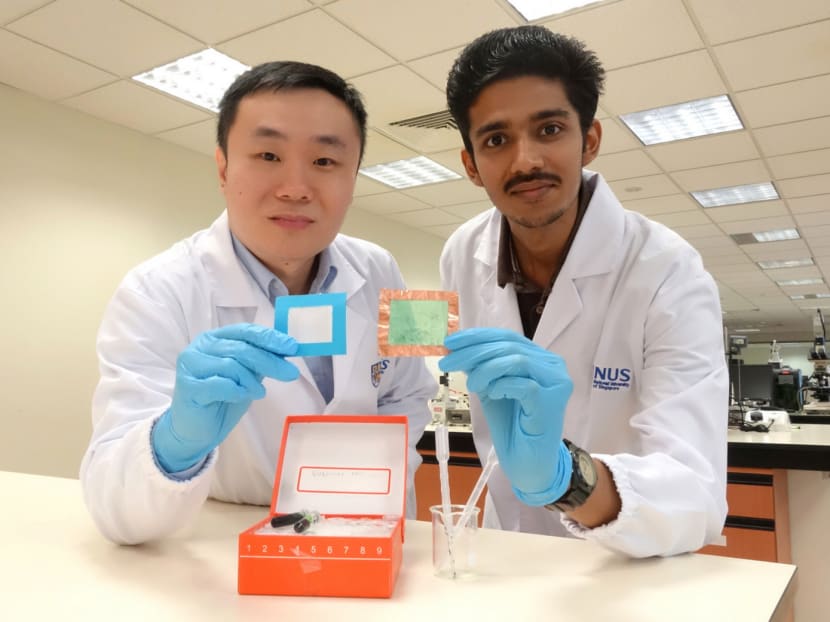NUS researchers create liquid that helps block PM2.5 particles
SINGAPORE — Researchers at the National University of Singapore have come up with an eco-friendly and cost-effective solution to keep out most of the harmful PM2.5 particles found in haze.

Head of the research team Assistant Professor Tan Swee Ching (left) holding a non-woven mesh and team member Sai Kishore Ravi, holding the novel see-through air filter they developed. PHOTO: NUS
SINGAPORE — Researchers at the National University of Singapore have come up with an eco-friendly and cost-effective solution to keep out most of the harmful PM2.5 particles found in haze.
By modifying phthalocyanine, a chemical compound commonly used in dyes for clothes, they created a nanofibre liquid solution that can be applied to non-woven mesh to become thin, see-through air filters that block out up to 90 per cent of PM2.5 particles.
During testing, researchers also found that this filter allowed air flow two-and-a-half times better than that of N95 masks available in the market. It also improves natural lighting and visibility while blocking harmful ultraviolet (UV) rays.
Assistant Professor Tan Swee Ching, who heads the research team, said high-efficiency air filters were often not suitable to be incorporated in doors and windows as they required multiple layers of microfibres or nanofibres, thus limiting their transparency.
“The see-through air filter developed using our approach has promising applications in terms of improving indoor air quality and could be especially useful for countries experiencing haze or high pollution levels,” he said.
PM2.5 pollutants are smaller than 2.5 microns in diameter. Although the Pollutant Standards Index includes other pollutants such as sulphur dioxide and carbon monoxide, PM2.5 is the air pollutant of concern during haze episodes, because their small size means they can lodge deeply in the lungs.
The researchers said that applying the solution to a non-woven mesh to place on windows was an eco-friendly alternative compared to air purifiers, which require energy to run.
The NUS team has filed a patent for the invention and said they would look at adding more functions such as anti-bacterial properties. The invention could hit the market in one to two years if the team manages to obtain industry collaboration. As it does not require specialised equipment to create, researchers said they do not foresee the commercial cost to be high.
In the long run, the team hopes to create a do-it-yourself kit, similar to printer ink cartridges, for consumers to create their own air filters at home.






